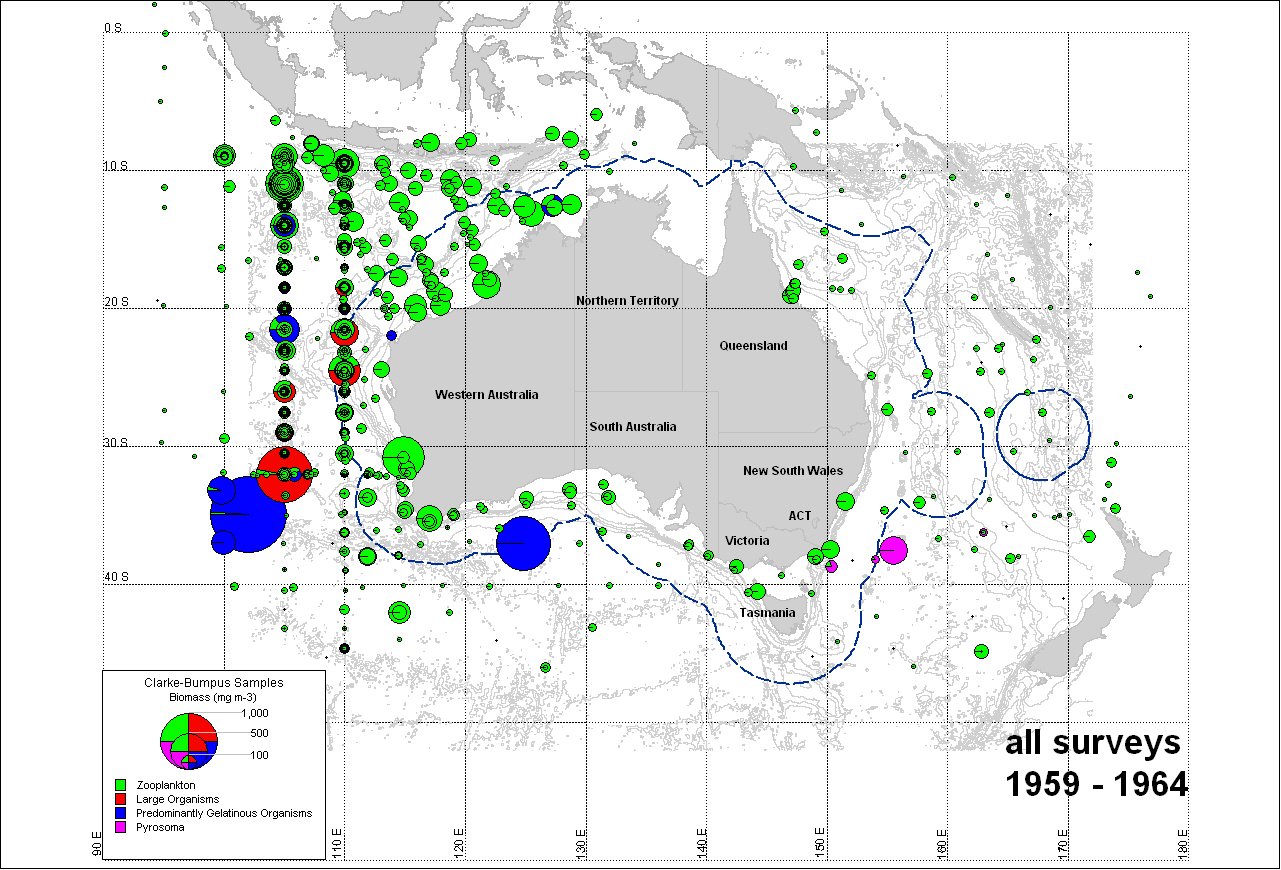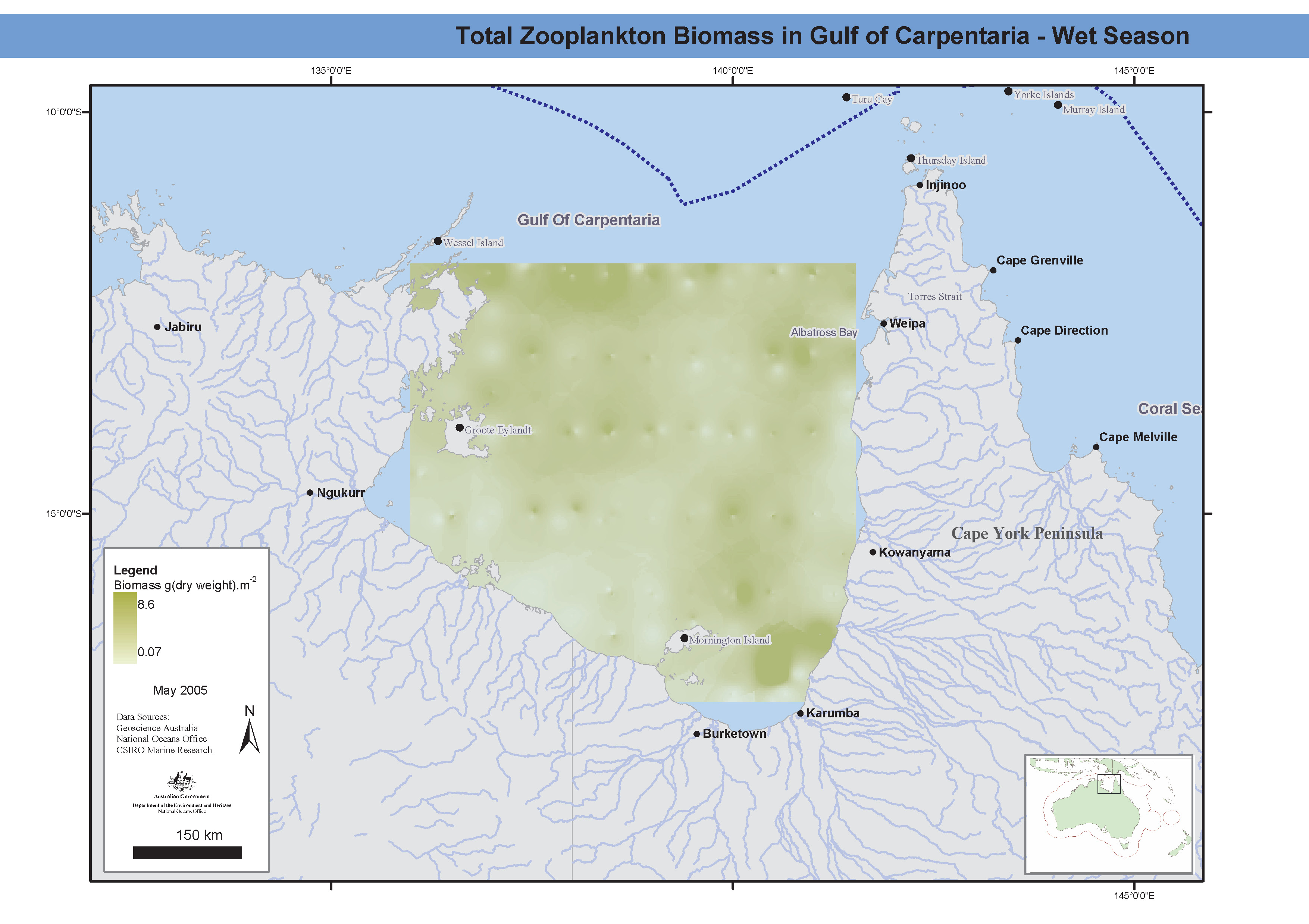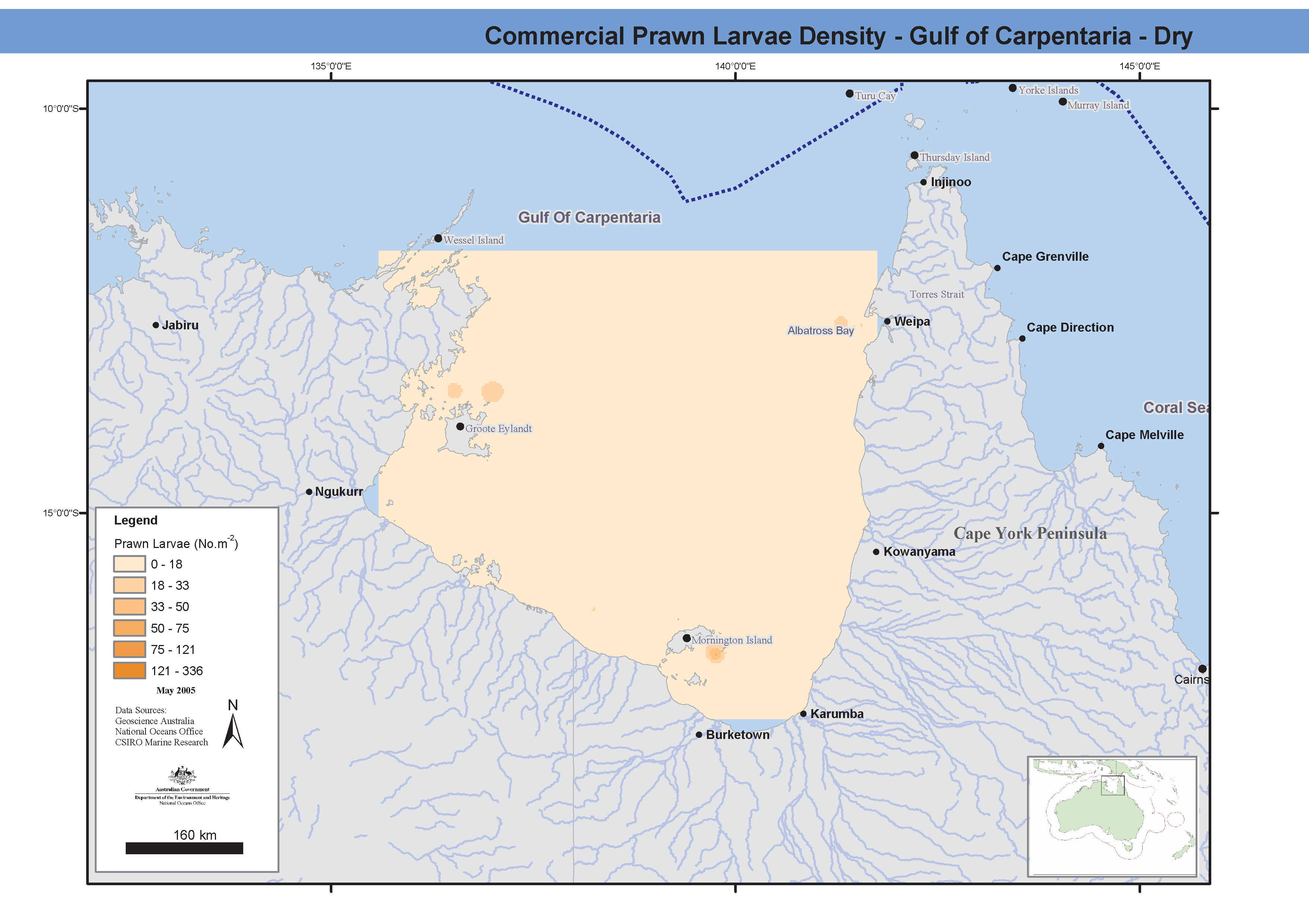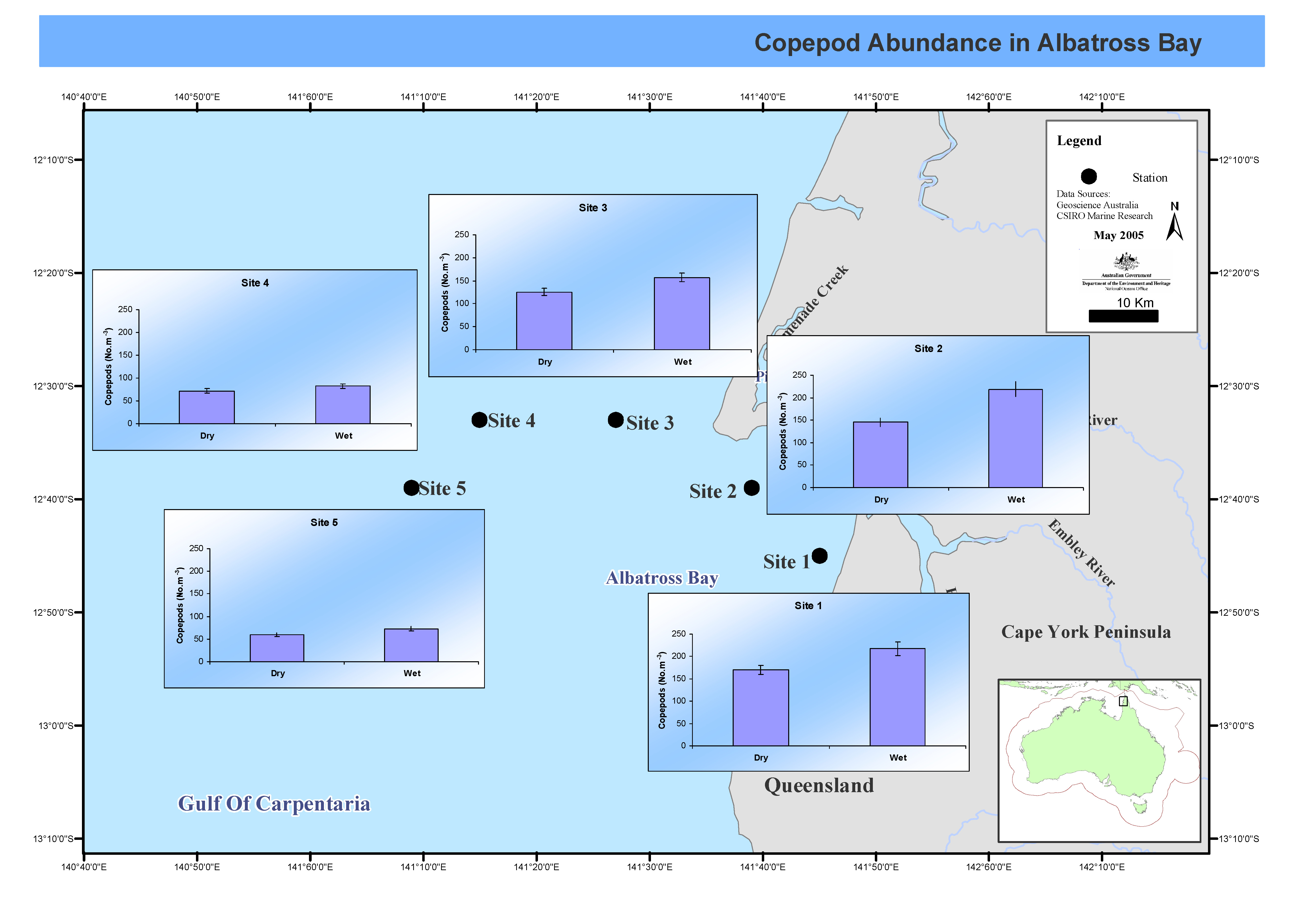Keyword
Earth Science | Biosphere | Ecological Dynamics | Ecosystem Functions | Biomass Dynamics
308 record(s)
Type of resources
Topics
Keywords
Contact for the resource
Provided by
Formats
Update frequencies
Status
draft
-
A total of 11 research cruises were carried out on the "Milana J", "Island Girl" and the FRV Southern Surveyor between 1993 and 1995 to study ponyfish (Leiognathid) biology and ecology. Data were collected on ponyfish length, weight, sex and gonad weight.
-
The initial conditions and carrying capacity estimates for the prawn stocks in NWS InVitro were calculated using catch data and biological information taken from the WA Department of Fisheries (2002) submission to Environment Australia regarding the Exmouth Gulf Prawn Fishery. This information was converted to total stock sizes using the assessment rule of thumb that catch at Maximum Sustainable Yield equals 12% of virgin biomass and cross checked using the methods outlined in Taylor and Dichmont (2001). This resulted in an upper bound on the estimate of maximum total biomass of 15000t for western king prawns, with a lower bound of 8000t and a median of 12000t. For the banana prawns the upper bound on biomass was again 15000t, but the lower bound was 4000t and the median was 8000t. All other prawn biological parameters were based on Kailola et al. (1993) and Taylor and Dichmont (2001).
-

Map of zooplankton biomass in Australian waters. Data collected from oceanographic surveys conducted between 1959 and 1964 onboard the vessels "Gascoyne" and "Diamantina" using a Clarke-Bumpus Oblique Haul, with zooplankton biomass expressed in milligrams per cubic metre. These maps have been produced by CSIRO for the National Oceans Office, as part of an ongoing commitment to natural resource planning and management through the 'National Marine Bioregionalisation' project.
-
ESRI grids showing phytoplankton provinces around Australia. The information was supplied by Dr Gustaaf Hallegraeff, of the University of Tasmania in 2004 as an update of the Jeffrey/Hallegraeff 1991 phytoplankton map. Variations in onscreen colour representation or printed reproduction may affect perception of the contained data.
-
Zooplankton biomass point data that has been mapped using MapInfo along 110ºE, Indian Ocean using a standard net (samples from return-trips along the 110ºE latitude line were shifted to 105ºE). These MapInfo layers have been produced by CSIRO for the National Oceans Office, as part of an ongoing commitment to natural resource planning and management through the 'National Marine Bioregionalisation' project. Variations in onscreen colour representation or printed reproduction may affect perception of the contained data.
-

Maps of total zooplankton biomass (dry weight) from stepped oblique bottom to surface plankton tows from Albatross Bay. Biomass estimates from two mesh sizes. These maps have been produced by CSIRO for the National Oceans Office, as part of an ongoing commitment to natural resource planning and management through the 'National Marine Bioregionalisation' project.
-
Between March 1986 and April 1992, monthly cruises were carried out at 21 stations in Albatross Bay, Gulf of Carpentaria. Prawn larval densities were measured and salinity-temperature profiles taken. Prawn larval density from stepped oblique bottom to surface plankton tows. Net sizes were 142 or 140 m mesh, 250 micron mesh with a 0.5 x 0.5 metre square frame, stepped-oblique tow. In this dataset Penaid prawn counts were recorded to genus level for all larval stages.
-

Maps showing prawn larval distribution of commercial prawn species during both the wet and dry seasons in Albatross Bay. The data was recorded from stepped oblique bottom to surface plankton tows, 140-142um nets. Nine cruises took place between 1975 and 1977 on chartered boats and the "Kalinda". Prawn larval biomass and densities were measured in several transects across the Gulf of Carpentaria, as well as total plankton biomass. These maps have been produced by CSIRO for the National Oceans Office, as part of an ongoing commitment to natural resource planning and management through the 'National Marine Bioregionalisation' project.
-

This map shows copepod abundance in Albatross Bay, Gulf of Carpentaria. The biomass and species composition of tropical zooplankton in Albatross Bay, Gulf of Carpentaria, northern Australia, were examined monthly for three years between March 1986 and March 1988. Zooplankton taxonomic groups were identified to species level where possible, with a primary focus on copepods. Data is stored as mean number of individuals per site. Sampling occurred across 5 sites (Site 1 = Inshore, Site 5 = Offshore, Sites progressed westward). Temperature and salinity were also recorded for many samples. This map has been produced by CSIRO for the National Oceans Office, as part of an ongoing commitment to natural resource planning and management through the 'National Marine Bioregionalisation' project.
-
26 cruises between 1986 and 1988 recorded the biomass and species composition of tropical zooplankton in Albatross Bay, Gulf of Carpentaria, Northern Australia. The initial data analysis was undertaken by Graham J B Ross between 20 November and 15 December 1999, where a significant number of errors, of various types where discovered and correction made. See attached metadata record REPORT.TXT. Zooplankton taxonomic groups were identified to species level where possible (from m6332.xls), with a primary focus on copepods, to produce the ESRI shape layer and m6332_copepods.xls. Data is stored as mean number of individuals per site. Sampling occurred across 5 sites (Site 1 = Inshore, Site 5 = Offshore, Sites progressed westward). Temperature and salinity were also recorded for many samples.
